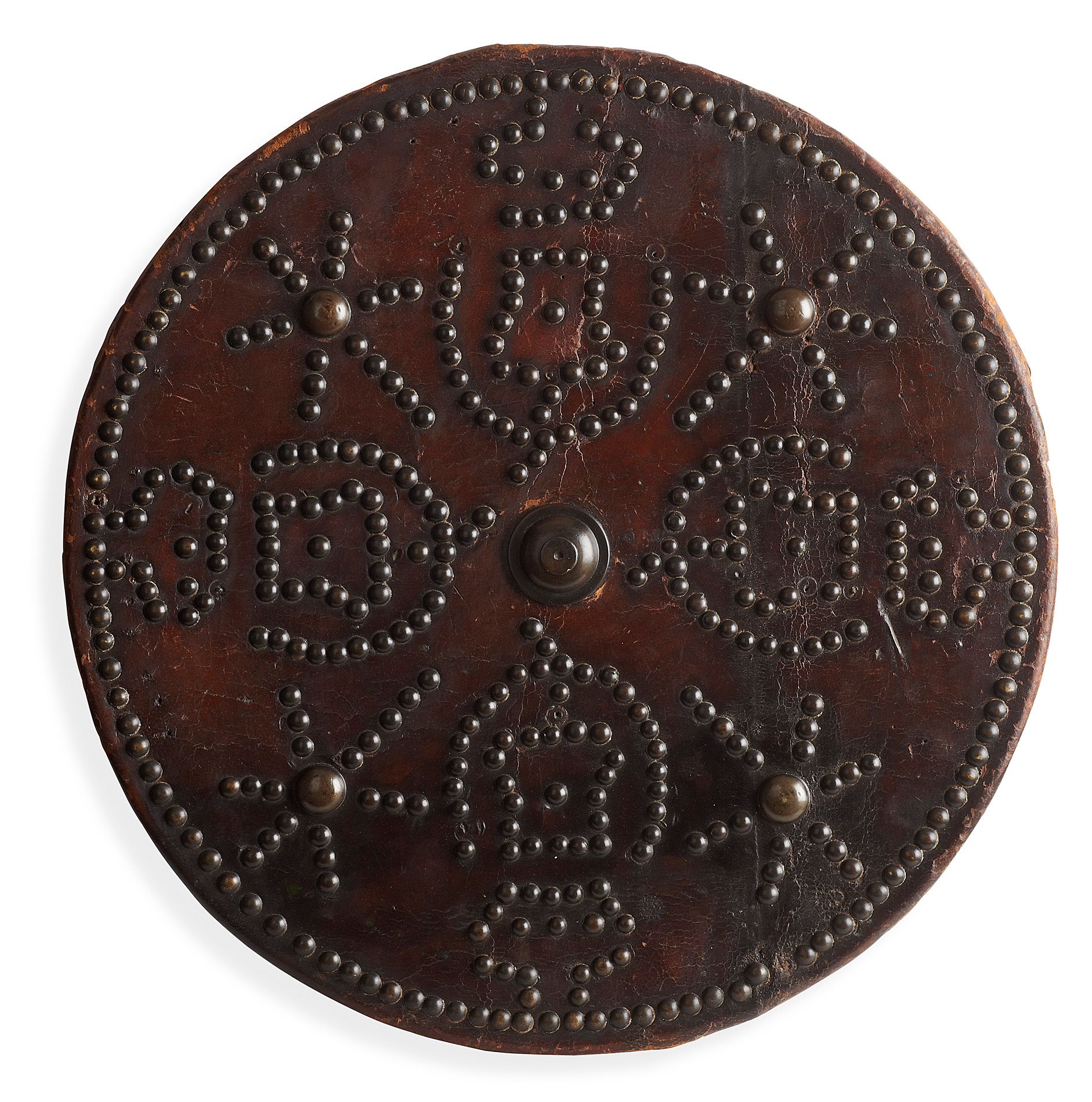Jacobite Arms
The Scottish targe is perhaps the most overlooked yet iconic aspect of a Jacobite’s arms.

19 August 2013
Kier Alexander
The Scottish targe is perhaps the most overlooked yet iconic aspect of a Jacobite’s arms.
The targe was as important to the men that bore them as the basket hilted sword and its use in the deadly ‘Highland Charge’, which had proved so effective throughout the campaigns, is undeniable.

Their importance at the time, now often overlooked, was obvious, as there are many examples of portraits of important Jacobite figures with their targes and they also feature prominently in poetry of the early 18th century.
“Joyful tidings through the Highlands, Hosts for conflict arming, Hammers beating making targes of bossy fine devices”
Taken from Alexander MacDonald’s ‘A New Song’
Compared to swords, dirks and even pistols the survival rate of these targes is small. It is well recorded that they were often the first item to be discarded upon the aftermath of the defeat at Culloden as men trying to make their escaped needed to do so un encumbered of weight and the sword and dirk were the fighting tools needed if they were captured. Also by the nature of manufacture they were not the type of items to survive being hidden - as so many swords and dirks were post 1746 - in the romantic thatch of a roof or under floor boards.
Expertly produced it appears that these objects were not provincially or amateur made items but as with swords, dirks and pistols centres of manufacture appear to have sprung up. Sadly no documentary evidence can be found to support this or suggest a location. However even within the small survival there are features of design and style which must be from the same hand, this example and the one within the William Keith Neal collection bearing this point perfectly.
The iconography of the crowned thistle on this and its ‘pair’ is interesting and for a maker to use the royal badge such as this must suggest either a close connection with the Royal family or the cause. While it can only be conjecture it has previously been suggested that this use may suggest the targes of this type were for a royal guard or ‘regiment’. This targe is not only a weapon but a symbol of support of the Stuarts and defiance to the English monarchy.
While the surface construction perhaps appears simple, the finer details of construction bear out the use and professional manufacture. Often formed of overlaid twin layers of oak or pine planks to give strength the leather covering not only bound this structure together but provided a surface to deflect softer blows. The cover to the reverse, also with deer hide often had packing material between, to cushion the blow and the fur outwards again adding another layer of protection.
The use of the highland targe appears to have virtually ended with the defeat at Culloden and this signalled the beginning of the loss of the Scottish targe.
Literature:
For an example of a targe of similar form from the William Keith Neal Collection, see ‘Culloden - The Swords and Sorrows’ 16th April - 20th September 1996, page 57, item 4:3